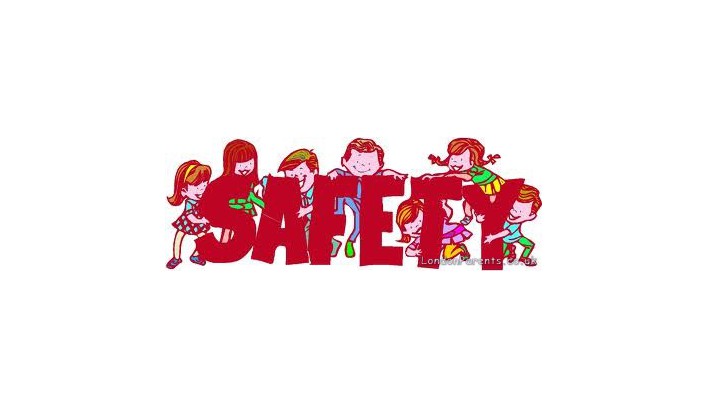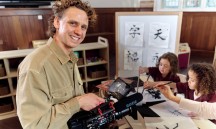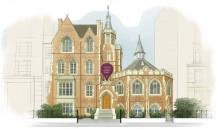Article Categories
News
-
20 July
-
04 November
-
10 July
-
12 June
-
05 June
-
24 September
-
19 September
-
10 May
-
26 April
Website Categories
Top Home Safety Tips for London Parents
 A survey by child safety expert Clippasafe
across 1,064 UK mums and dads revealed that despite all parents
questioned ranking their child’s safety a ‘major concern’, a shocking 68
per cent of parents admit to keeping bleach on the floor next to the
toilet, well within reach of little hands.
A survey by child safety expert Clippasafe
across 1,064 UK mums and dads revealed that despite all parents
questioned ranking their child’s safety a ‘major concern’, a shocking 68
per cent of parents admit to keeping bleach on the floor next to the
toilet, well within reach of little hands.
With only 7 per cent of parents storing cleaning products and medicines in a locked cupboard above a child’s head height as recommended, many appear to have been lulled into a false sense of security by child-proof packaging.
Awareness of other major safety hazards varied significantly, as although the majority of parents had safety gates installed (92 per cent) in stairways or door openings, 73 per cent had plug socket covers on vacant sockets, only a worrying 34 per cent of households had fitted shorteners to blind cords – which have been responsible for more than ten deaths in the UK since the start of 2010 (ROSPA).
With over one million children being admitted to hospital each year due to accidents around the home, Child Safety Week (18th – 24th June) is an opportunity for parents to reassess their home for safety hazards.
Clippasafe managing director Roger Cheetham says: “Our research has shown that although parents recognise the vital importance of child safety in the home, new parents have so much to consider that common sense can go out of the window and some simply aren’t aware of many of the basics which could make a real difference and ultimately save lives.”
“We are urging parents to take this opportunity to assess their homes for child safety hazards – something as simple as getting down to your child’s eye level and seeing what they see, can make all the difference.”
Top home safety tips for parents:
1. Take the time to assess each room and hallway for home safety hazards. It’s best to view things from your child’s height, so get down on your hands and knees and have a look around.
2. The kitchen is one of the most high-risk areas of the home, housing everything from toxic cleaning products to sharp knives. Cupboards and storage areas are also tempting ground for mini explorers, so fit child locks to cupboard doors and drawers to ensure little ones can’t get their hands on anything dangerous. Ensure any cords from electrical equipment such as toasters and kettles are kept tucked away and aren’t left hanging down temptingly for children to pull on.
3. Ensure any alcohol is stored well away from children – in addition to securing drinks cabinets, don’t forget to fit fridge locks to keep little ones away from any wine or beers chilling in the fridge.
4. Protect delicate heads from sharp edges by fitting corner cushions and soft edge guards to coffee tables, fireplace hearths and shelves.
5. Limit the risk of tottering toddlers pulling the television over onto themselves by placing your set on a low, stable piece of furniture or better still, fixing a plasma screen to the wall.
6. Don’t overload your plug sockets – this is a major cause of household fires. Also, keep little fingers out of sockets and prevent them from removing plugs by fitting socket covers and protectors.
7. Trips and falls are one of the most common injuries for children. Keep your stairs and hallway free from clutter and fit safety gates to the top and bottom to prevent any nasty falls. An easy-to-fit gate can also be removed and used elsewhere in the home to stop little ones from running into danger.
8. Test your smoke alarm and make a note to do so each week. If you don’t already have one, install a carbon monoxide alarm. These are available from most supermarkets for around £10-£20.
9. Children are irresistibly drawn to windows, but they are dangerous. Make sure furniture is standing away from opens and fit locks to stop windows and balcony doors from being opened too wide. Blind cords pose a particular risk because they often hang at head height – keep any cords held well above head height by using a drawcord shortener or cleat. 10. Be water safety conscious. Children can drown in less than an inch of water – make sure you never turn your back on your youngster whilst they’re in contact with water. Also, attach a cover-clamp to your toilet to keep curious kids safe and fit an inflatable tap guard to prevent delicate skins from coming into contact hot taps. Installing tap straps will secure taps in the closed position, helping to prevent scalds and flooding accidents.
11. Finding the perfect temperature for your youngster’s bath is essential. Children and babies‚ skins are much more delicate than an adult’s – what seems like a nice warm bath to you could scald a little one. A bath-temperature indicator will deliver an accurate, safe temperature readings.
12. Make sure all your toiletries and medicines are locked away in a cabinet, as even items such mouthwash can be harmful to little ones. Don’t forget to store bathroom cleaning products such as bleach well out of reach – not by the toilet!
1. Take the time to assess each room and hallway for home safety hazards. It’s best to view things from your child’s height, so get down on your hands and knees and have a look around.
2. The kitchen is one of the most high-risk areas of the home, housing everything from toxic cleaning products to sharp knives. Cupboards and storage areas are also tempting ground for mini explorers, so fit child locks to cupboard doors and drawers to ensure little ones can’t get their hands on anything dangerous. Ensure any cords from electrical equipment such as toasters and kettles are kept tucked away and aren’t left hanging down temptingly for children to pull on.
3. Ensure any alcohol is stored well away from children – in addition to securing drinks cabinets, don’t forget to fit fridge locks to keep little ones away from any wine or beers chilling in the fridge.
4. Protect delicate heads from sharp edges by fitting corner cushions and soft edge guards to coffee tables, fireplace hearths and shelves.
5. Limit the risk of tottering toddlers pulling the television over onto themselves by placing your set on a low, stable piece of furniture or better still, fixing a plasma screen to the wall.
6. Don’t overload your plug sockets – this is a major cause of household fires. Also, keep little fingers out of sockets and prevent them from removing plugs by fitting socket covers and protectors.
7. Trips and falls are one of the most common injuries for children. Keep your stairs and hallway free from clutter and fit safety gates to the top and bottom to prevent any nasty falls. An easy-to-fit gate can also be removed and used elsewhere in the home to stop little ones from running into danger.
8. Test your smoke alarm and make a note to do so each week. If you don’t already have one, install a carbon monoxide alarm. These are available from most supermarkets for around £10-£20.
9. Children are irresistibly drawn to windows, but they are dangerous. Make sure furniture is standing away from opens and fit locks to stop windows and balcony doors from being opened too wide. Blind cords pose a particular risk because they often hang at head height – keep any cords held well above head height by using a drawcord shortener or cleat. 10. Be water safety conscious. Children can drown in less than an inch of water – make sure you never turn your back on your youngster whilst they’re in contact with water. Also, attach a cover-clamp to your toilet to keep curious kids safe and fit an inflatable tap guard to prevent delicate skins from coming into contact hot taps. Installing tap straps will secure taps in the closed position, helping to prevent scalds and flooding accidents.
11. Finding the perfect temperature for your youngster’s bath is essential. Children and babies‚ skins are much more delicate than an adult’s – what seems like a nice warm bath to you could scald a little one. A bath-temperature indicator will deliver an accurate, safe temperature readings.
12. Make sure all your toiletries and medicines are locked away in a cabinet, as even items such mouthwash can be harmful to little ones. Don’t forget to store bathroom cleaning products such as bleach well out of reach – not by the toilet!
Related articles
- Odyssey will open its first UK campus in Marylebone, London, April 2025 - - The award-winning global preschool for children 0-5 ...
Read moreEPIC GLOBAL PRESCHOOL, ODYSSEY, COMING T...
Londonnews554XXXAn award-winning preschool offering from Asia is to open its first campus in London, bringing a new global ‘limitless learning’...
Read moreParenting is no easy task, and for Jordan and Briana Driskell, raising their quintuplets—Zoey, Dakota, Hollyn, Asher, and Gavin&mdash...
Read more0 comments
No messages yet




